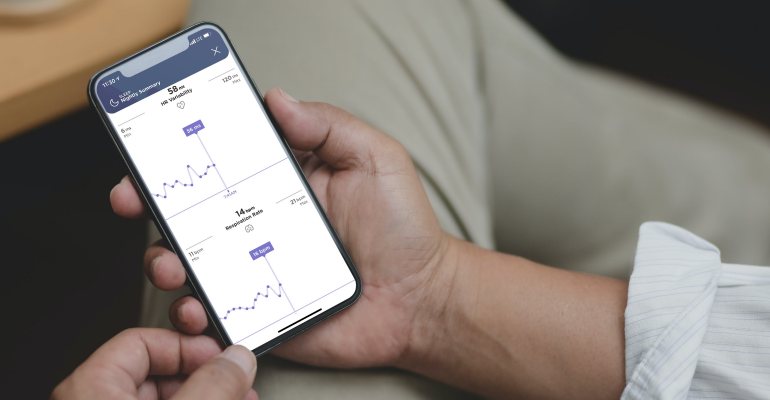GluCare Integrated Diabetes Center, pioneers of remote patient monitoring and digital therapeutic approaches for diabetes care, announced an affordable CE-marked continuous glucose monitoring (CGM) system for measuring blood glucose levels. The low price point of the GluCare CGM system is expected to make the technology accessible for many more patients who were previously unable to benefit from this technology due to the high costs associated with CGMs currently available in the market.
A Revolution in Care
In recent years, CGM systems have emerged as an integral part of diabetes care. Many studies have shown that continuous glucose monitoring can lead to significantly better outcomes than traditional sporadic self-monitoring of blood glucose (SMBG). The patient pricks their finger to measure blood sugar levels at a single point in time.
CGMs can improve health outcomes for people with diabetes by reducing HbA1c and decreasing hypo and hyperglycemic episodes. The American Diabetes Association now recommends CGM systems for all diabetes patients who inject insulin multiple times per day and use an insulin pump. However, there is growing and overwhelming evidence that CGMs should be used for all diabetics and pre-diabetics, including obese patients who do not present as people with diabetes. There is also a growing demand for CGMs by healthy individuals looking to manage glycemic variability to help with overall metabolic function.
“One of our biggest frustrations in caring for our patients has been the constant battle with insurance companies for CGM coverage,” said Ali Hashemi, GluCare co-founder, and Chairman. “The benefits of a CGM are undeniable, but unfortunately, the up-front cost burden is high and daunting – both for insurers as well as for cash-paying patients. To mitigate this, we took this problem head-on in launching our own CGM at a much lower price-point but with equivalent performance.”
The GluCare CGM is integrated into a novel model of care that takes the traditional CGM value proposition a step further. GluCare has built a digital therapeutics platform that collects data from multiple inputs, including wearable devices and electronic medical records, and incorporates a wide range of health behaviors, including sleep, physical activity, and dietary habits, with current blood glucose levels. The combined data is continuously analysed by artificial intelligence algorithms and compiled into a risk score monitored by a specialised clinical care team.
GluCare’s CGM system allows patients to continuously monitor their medical data, receive personalised tips to help improve health, and communicate with a diabetes coach. The increased patient engagement leads to significant behavioral change and improved outcomes.

Superior Clinical Outcomes
An initial study shows that the GluCare system leads to better control of blood sugar levels — the average patient HbA1c dropped by an average of 2.14 per cent within the first 90 days of beginning the program. This system led to other improvements as well. Patients achieved lower levels of LDL cholesterol, triglycerides, and uric acid and reduced body mass index (BMI).
The study authors also found that the GluCare model led to improvements in the time in range (TIR), a measure that describes how long a person’s blood glucose levels stayed within target values. GluCare CGM monitoring led to an average TIR of 83 per cent.
“We have proven that the use of CGM within the GluCare ‘continuous and integrated’ model of care leads to better outcomes than patient-only use of CGMs,“ said Dr. Ihsan Almarzooqi, GluCare co-founder and managing director. “Real-time monitoring of glucose variability and engagement with coaches, educators, dieticians, and physicians as a part of a continuous model of care is vastly better than usual care where patients manage their glucose variability.”
Improved Cost Savings
Although CGM systems can effectively help improve the health of diabetes patients, the accessibility of these devices remains a challenge due to the economic burden. As the price of CGM systems drops, more people with diabetes will have the opportunity to use this technology to safeguard their health.
“It is no longer acceptable to have CGMs only available to those that have the relevant insurance coverage or those who can afford it,” Dr. Almarzooqi noted. “The body of evidence in clinical improvements using CGM is overwhelming.”
GluCare is well-poised to offer a CGM alternative that beats the pricing on other comparable devices. The new CGM is about 85 per cent less expensive than the gold standard Dexcom CGM System and costs nearly 30 per cent less than the FreeStyle Libre Flash Glucose Monitoring System, previously the lowest-cost option on the market.
These lower up-front costs, paired with better clinical outcomes and the potential for more successful diabetes management, could lead to a reduced financial burden on patients and healthcare systems alike. “We believe the return on investment of using CGM is overwhelmingly positive even at current market price points. However, if it can be offered at a lower unit cost, the ROI becomes more attractive not only for insulin-dependent diabetics but also for all diabetics or pre-diabetics. We also predict that companion management platforms, where a CGM is reimbursed by insurance under a program such as GluCare's but less so under usual care, will be a more usual practice as we move towards value-based approaches in the medical device ecosystem.” said Dr. Almarzooqi.


